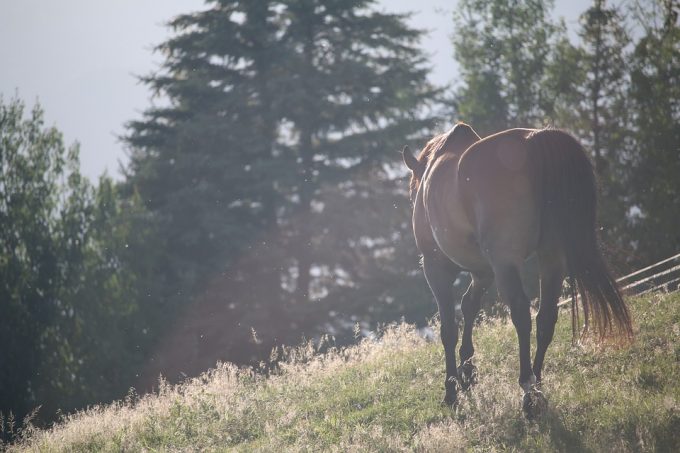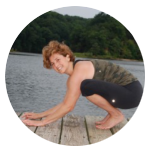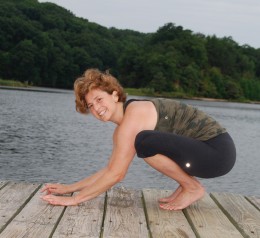Did you know that the key to feeling grounded in our bodies does not rest in the feet. It is rather, a little higher up in our gravitational centre, the hips. For both physical and energetic health, there is a lot more to the hips than meets the eye.

Let’s face it, living in today’s world is not easy. Jobs, politics and borders are under constant negotiation, and while we are information rich, we are starved for the wisdom that might help us to navigate all the uncertainty. We are left feeling unstable, and we grab on and into our body, resulting in tight jaws, tight shoulders and tightness felt in or around the hips.
Finding the balance
Physiologically, the hips are a complex area made of multiple bones, joints, muscles and organs. Most importantly, the placement of our hips determines how we experience weight flowing through the body. For example, when we tuck our tail under and carry the hips behind the ankle joint, the weight moves into the heels, and our toes and balls of feet are unable to land.
This pattern creates tension on the back of the outer hip bones, and prevents us from moving forward, physically, if not mentally. Our knees are unable to fully extend and therefor we have difficulty pushing off when walking.
Conversely, when our tail sticks out behind us, it sends the weight of the upper body forward and our heels, as well as our spine, are unable to rest back in gravity. In this pattern the head and upper body are ahead of the legs, and can provoke anxiety and nervousness.
Ideally, our hips are in a place of balance when the tail is relaxed down in the direction behind the heels. Kind of like a horse’s tail as it hangs when the horse is serenely grazing out in the pasture.

Energetically, the hips are a place of Chakra and Bandha. Part of the subtle body, these two words are related, as both help to regulate energy.
The chakras are translated as wheels responsible for spinning energy throughout the body. The energy that they move is called prana, also known as our life force.
There are seven chakra points that follow the path of the spine from the pelvis to the crown of the head, and the placement of each chakra represents the place where energy and a particular aspect of our consciousness meets.
The first chakra is found in the base of the spine at the pelvis, and is called Muladhara Chakra. It is responsible for stability, security and our basic needs. When this wheel is open, we feel safe and fearless, but when it closes down or is out of balance, we can start to feel vulnerable and unprotected.
In addition to practicing asana, pranayama (breath restraint and release) and mantra (repetitive chanting of a short phrase) can be very effective ways to rebalance the chakras. Lam is the sound that corresponds with the muladhara chakra.
>>A short tutorial on Alternate Nostril Breathing>>
Locks
A Bandha is an energetic seal, or lock. Unlike the chakras, which we cannot feel or control in a physical way, most of the points in the body where bandhas are located correspond to musculature in the body in the form or diaphragms, so we are physically able to close and lift these seals, channeling our energy in a specific direction.
The lock in the pelvic floor is called Mula Bandha. Mula translates into root, beginning or foundation. We activate this lock by engaging the pelvic floor, resulting in a greater ability to root down while at the same time lifting up. Consequently, our spine is able to align more accurately in space and the force of gravity can more easily flow through our body.
>>Learn more about Mula Bandha>>
Putting it all together
Vinyasa style yoga classes, such as the Jivamukti method, should be practiced with the Mula Bandha engaged and with awareness of breath.
If you feel, like most of us, that there is some tightness in your hips that needs resolving, then look no further than this full length Jivamukti flow which focuses on opening the hips.
>>Jivamukti Hip Class with Lizzie Reumont>>
 This post was written by Lizzie Reumont. Lizzie’s practices of yoga include a variety of internationally renowned teachers and methods, however, she found a home in the Jivamukti Yoga method which she has been teaching since 2007. Classes are infused with a diverse and well-curated music collection, and her attention rests in alignment and breath awareness. Hands-on, intelligent adjustments are a unique aspect of Lizzie’s classes which are intended to enable the practitioner to better understand the energetics and key structures involved in various postures. Visit Lizzie’s own site at www.freeliz.com.
This post was written by Lizzie Reumont. Lizzie’s practices of yoga include a variety of internationally renowned teachers and methods, however, she found a home in the Jivamukti Yoga method which she has been teaching since 2007. Classes are infused with a diverse and well-curated music collection, and her attention rests in alignment and breath awareness. Hands-on, intelligent adjustments are a unique aspect of Lizzie’s classes which are intended to enable the practitioner to better understand the energetics and key structures involved in various postures. Visit Lizzie’s own site at www.freeliz.com.






What a lovely way of explaining such an important aspect of physical as well as energetic anatomy! Thank you Lizzie!